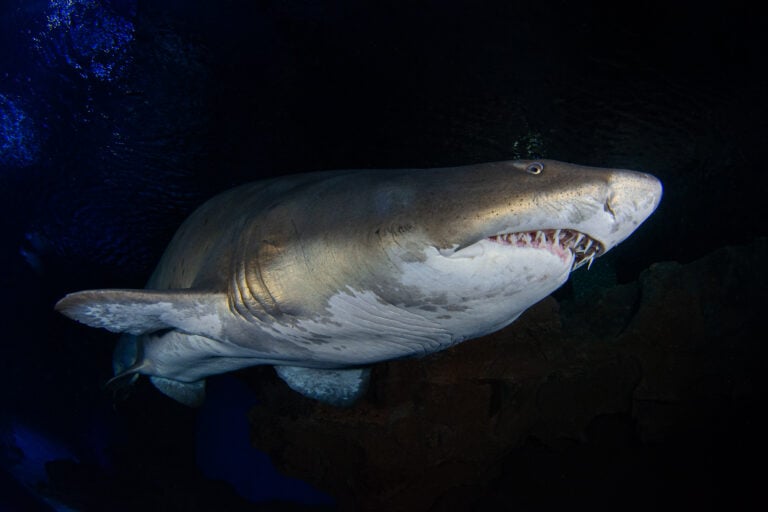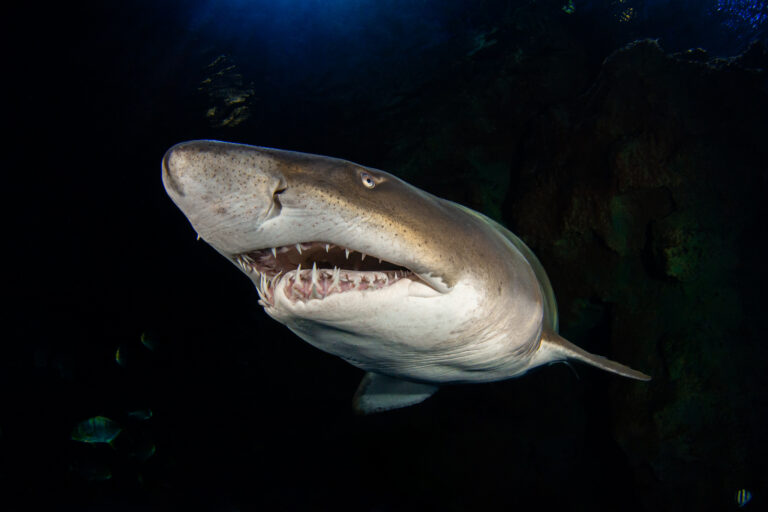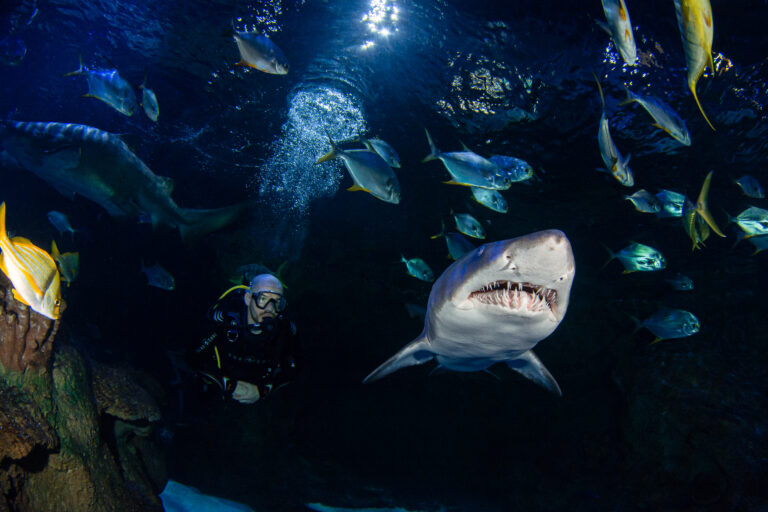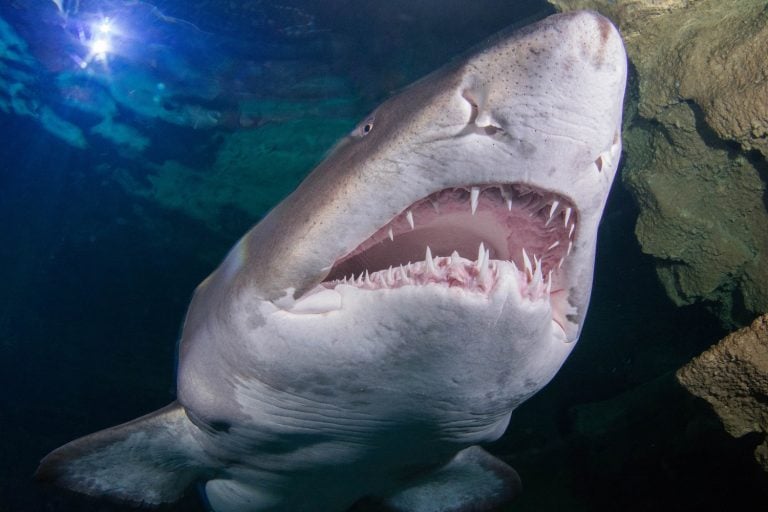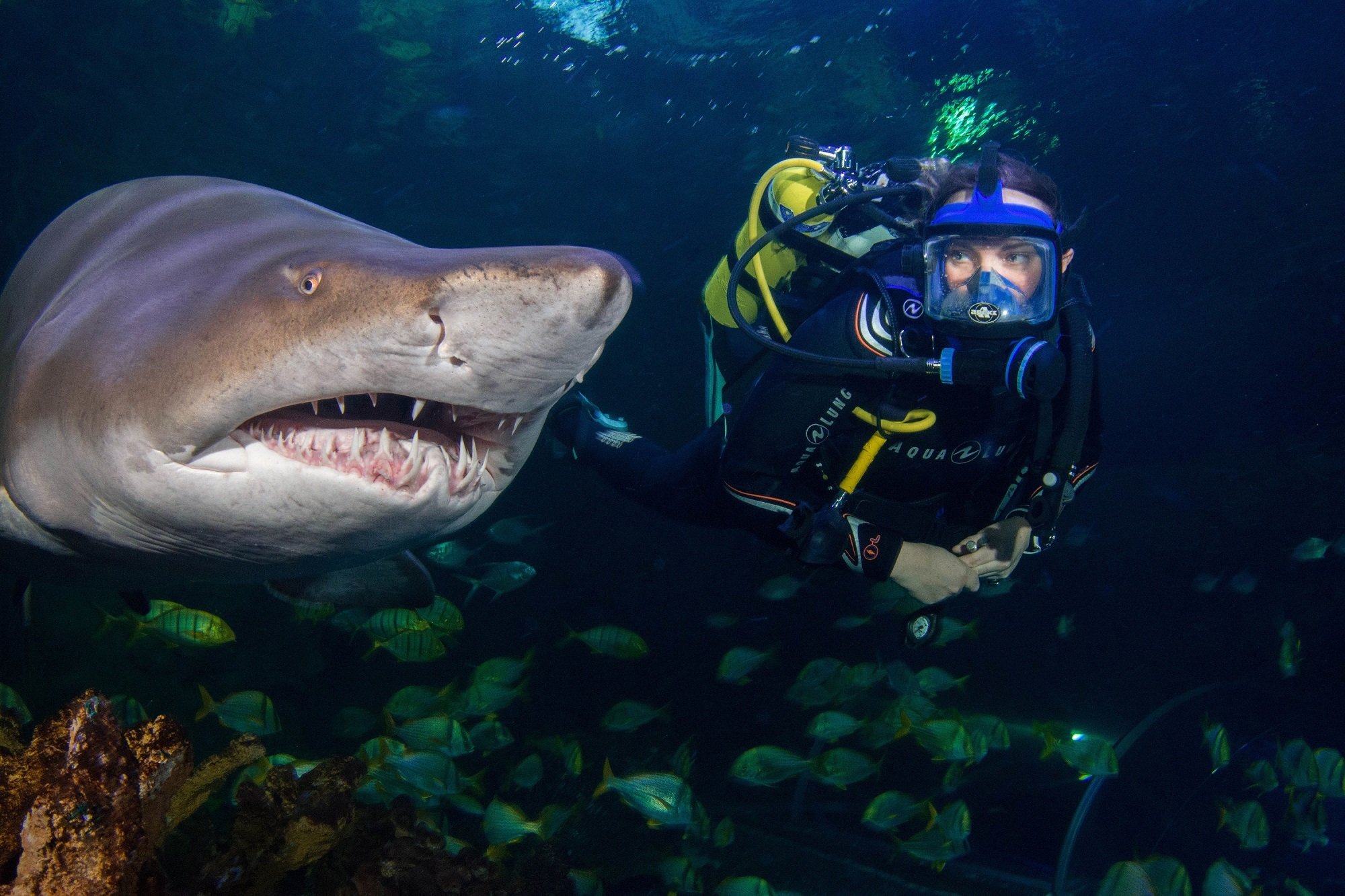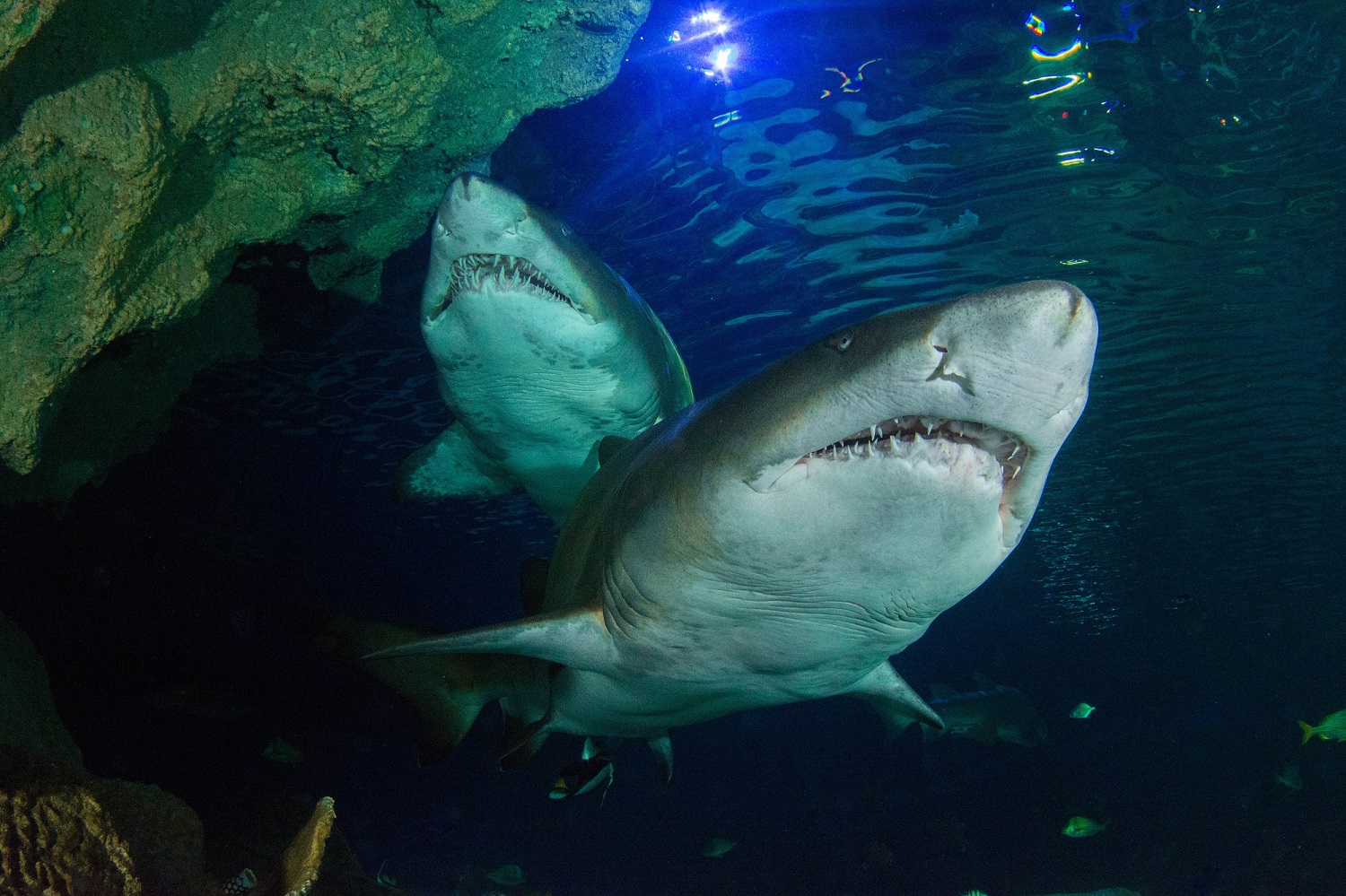
Sand Tiger Sharks (Carcharias taurus) get their name because they usually live along sandy shorelines. They are part of the Lamnidae family of sharks and although their names sound similar, they are not closely related to Tiger Sharks.
The largest recorded account of Sand Tiger Sharks is at 3.2 meters and have a fearsome appearance with protruding, jagged teeth, however they are actually very placid animals. They are also exceptional swimmers, with powerful bodies and fins, but prefer to move slowly through the water.
DID YOU KNOW: Sand Tiger Sharks can take a breath of air out of the water? They do this to increase their buoyancy so they can float motionless near the surface waiting for prey!
Type
Shark
What do they eat?
Fish, Skates and Aquatic Mammals
Size
2.2 – 3 meters
Water Type
Subtropical and Temperate Waters
Where are we?
Atlantic, Pacific and Indian Oceans
See Us At
Ocean ExhibitSand Tiger Sharks inhabit subtropical and temperate waters around the world, eating from the bottom of the ocean on bony fish, crustaceans, squids, skates and even other sharks. They are nocturnal hunters, taking shelter in the day in the shallow waters near reefs, in caves or under overhangs.
Sand Tiger Sharks are categorised as critically endangered on the IUCN Red List. The threats on this species are believed to be humans capturing them for foods, medicines and products, humans are also a competitor for its food source as overfishing continues. Their declined numbers aren’t helped by the fact that Sand Tiger Sharks have one of the lowest reproductive rates for sharks. The females produce up to 50 embryos during each pregnancy, however when the largest embryo reaches around 10cm she will eat all the others so only one shark is born 8-12 months later, this is a process call intrauterine cannibalism, otherwise known as adelphophagy which literally translates to “eating one’s brother”.


